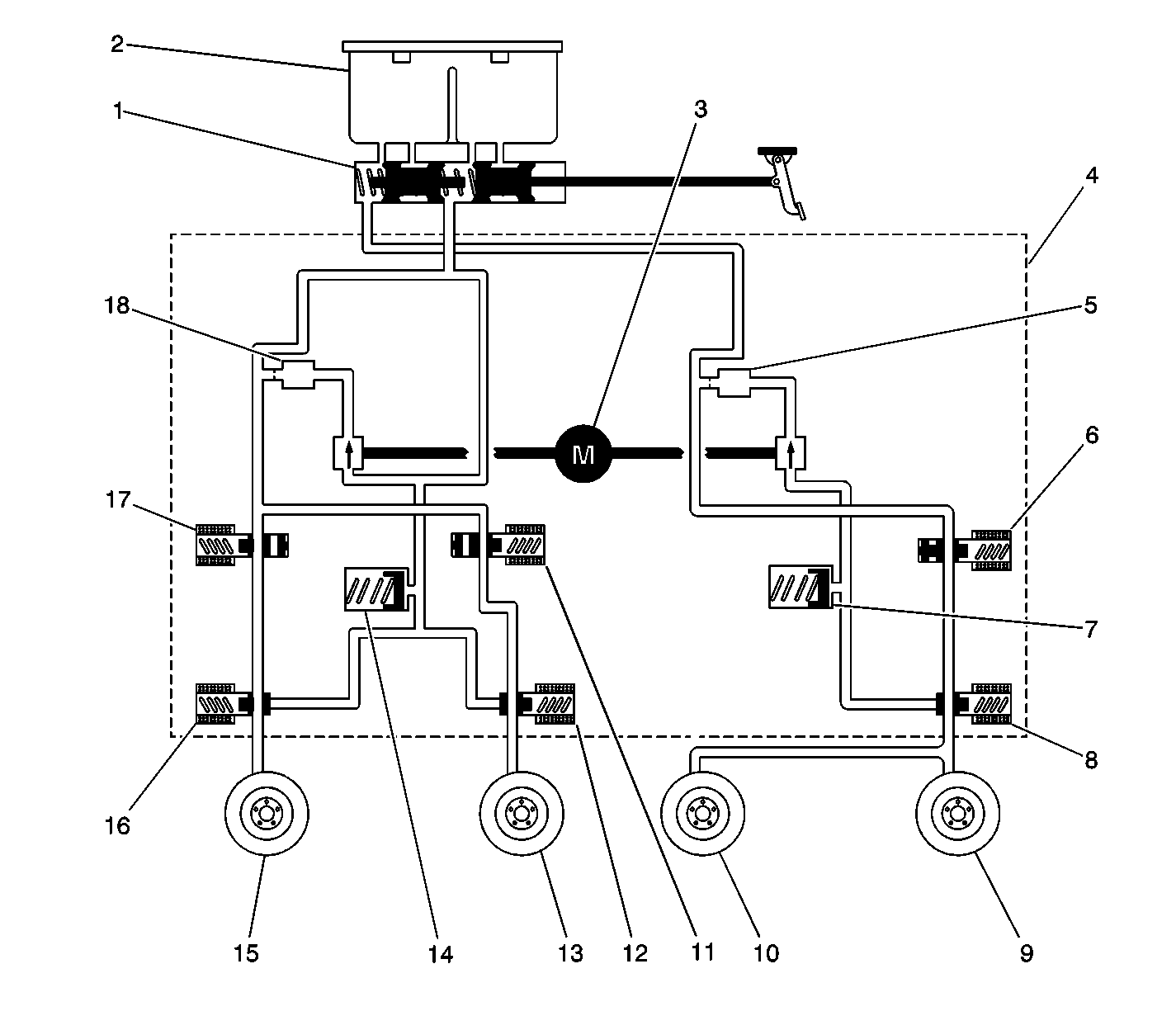The system uses an amber ABS indicator lamp in the instrument cluster
in order to show system operation and malfunctions.
Whenever the key is turned to the RUN position, the instrument cluster
starts a bulb check by illuminating the ANTILOCK and BRAKE indicators. The
bulb check ends when the instrument cluster receives a Class 2 serial data
message from the EBCM and BCM that no malfunctions were detected. If no malfunctions
were detected, the instrument cluster will turn OFF the ANTILOCK indicator
after two seconds, and the BRAKE indicator will turn OFF a second later.
This confirms correct operation of the EBCM and the indicators.
If the EBCM detects a malfunction, either on power-up or during operation,
it will notify the instrument cluster via a Class 2 message to illuminate
the ANTILOCK indicator. If the malfunction can affect operation of the base
brakes, the BRAKE indicator may be illuminated as well. In order to determine
the specific cause of the malfunction, refer to
Diagnostic Starting Point
.
The ANTILOCK indicator can be illuminated when one of the following
conditions occurs:
A self-test is performed when the vehicle reaches a speed of greater
than 3 mph. At this time the internal EBCM relay, six solenoid coils
and BPMV pump motor are cycled and checked for shorts/opens. The BPMV
pump will make a slight sound when this function occurs.

